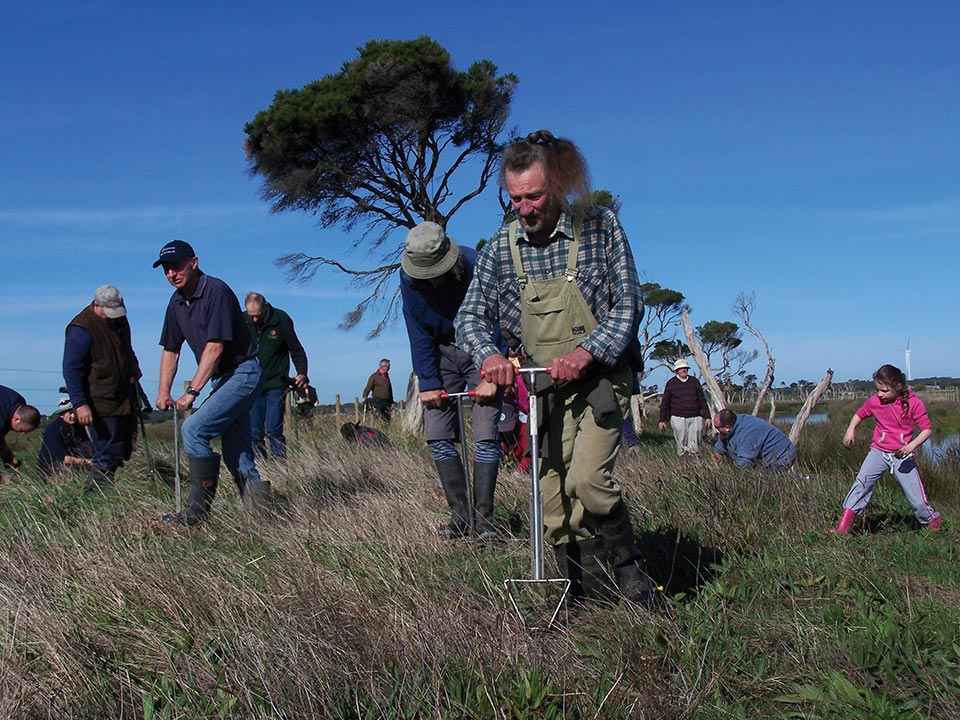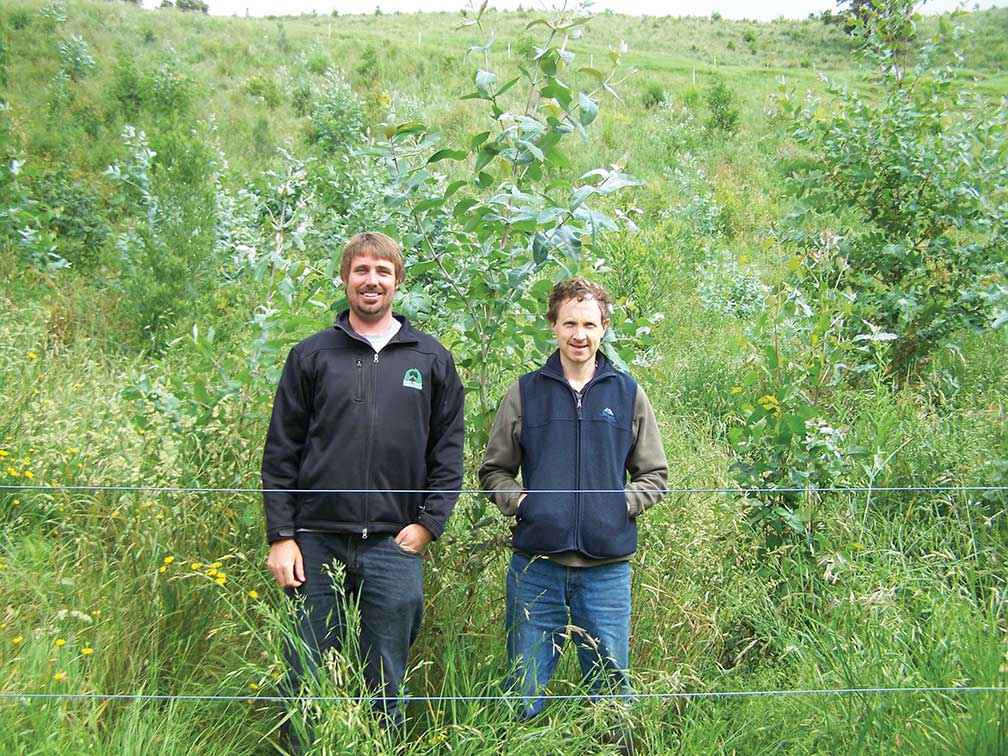Victorian Landcare Magazine - Spring 2016, Issue 67

The Powlett Project committee was formed in 1996 after Rob Youl visited the Bass Coast with a five-year project idea that involved bringing corporate sponsorship to a catchment-wide project.
The Powlett catchment covers an area of 60 square kilometres within 90 minutes of Melbourne. Its rich soils were originally covered with one of Australia’s largest forests, but after many years of intensive dairy and beef grazing it had become almost totally denuded of native vegetation. The catchment was an ideal prospect for rejuvenation.
The original committee was made up of farmers from the top of the catchment right through to the estuary. Four of the original committee members, Clive Hollins, Brian Enbom, Paul Speirs and Rob Atkinsons are still participating in the project after 21 years, showing just how resilient the project has been.
Martin Fuller, now Chief Executive Office of the West Gippsland CMA, was the Project Officer for the first five years. Martin and Rob Youl worked together to pioneer corporate engagement with the project. Jodie Leggett then took over and was great at engaging with the landholders in the catchment.
Geoff Trease took the helm for the next seven years and his knowledge of indigenous plants and seed collection was an incredible asset. When Geoff moved across to the Leongatha Seed Bank, current Project Officer Dave Bateman came on board. The project has really benefited from the commitment and diverse experience of its staff.
"Funding has ebbed and flowed over the long history of the project but we have planted on average 100,000 plants each year, bringing our grand total to more than 2.1 million plants in the ground."
The committee directly consulted with landholders in regards to planting on their farms. This worked well for the first few years of the project. Once the project was established, project officers took on this role. Landholders were required to fund fencing, site preparation and ongoing maintenance works, which ensured they took ownership of their sites.
Our work with Landcare groups started with the Archies Creek Reafforestation Group and the Korumburra Landcare Group. The Powlett Project was the catalyst for other groups starting up, including the Kongwak Landcare Group, Three Creeks Landcare Group and the Wonthaggi Urban Landcare Group. The Powlett Project Committee meets bi-monthly to look at and approve all large-scale revegetation projects within the catchment and to offer support to the landholders on best practice revegetation.
Funding has ebbed and flowed over the long history of the project but we have planted on average 100,000 plants each year, bringing our grand total to more than 2.1 million plants in the ground.

Above: Dave Bateman (left) and Geoff Trease inspect innovative revegetation on Lyn Herbert’s property established with pre-germinated direct seeding.
We have pioneered many different direct seeding revegetation methods in all parts of the catchment. The direct seeding approach has been a cost effective and efficient method of getting many plants in the ground over the life of the project. We have direct seeded over 150 kilograms of indigenous seed which represents over 375,000 plants established.
Our local indigenous plant nurseries have played a major role with nursery operators helping to improve the diversity of species grown by educating landholders. Jill Bird and Barry and Bronwyn Teesdale from Melaleuca Nursery, Ian Starkey from Koorooman Nursery, Barry Hill from
Tree Action, and Michael Bolding from the Blackwood Forest Nursery have grown a comprehensive suite of plants to enable high-quality restoration of the catchment.
We have held between 10-15 planting days each year since 1996. An average of 25 volunteers attend each day to help with planting. The planting days provide opportunities for social interaction, education on catchment issues and some great lunches together.
Corporate sponsors have been important as additional support for the project. Paul Burns helped facilitate strong corporate links to Edison Mission Energy (now known as ENGIE). This relationship brought 15 years of support.
The Powlett Project also pioneered innovative corporate sponsorship models that involved companies and corporations getting their staff out into the catchment on team building days and involving them in the project their sponsorship dollars were supporting. Landcare Australia Limited brokered our first large corporate sponsorship relationship with BHP.
Local and wider partnerships have been critical to the project’s success. The Leongatha Seed Bank, local schools, scout groups, Rotary groups, Greening Australia, Conservation Volunteers Australia, and universities have all been involved. The Bass Coast Shire Council has supported our project from the beginning, providing funding support and the committee with a place to meet. The West Gippsland CMA has also been a partner for many years. The CMA has helped facilitate the removal of many kilometres of willows from the catchment that has been replanted with indigenous plants provided by the Powlett Project.
"Local and wider partnerships have been critical to the project’s success."
Weed control continues to be a challenge for the project – especially getting landholders to undertake weed control work before and after planting. The committee and project officers have made many follow-up site visits to give the landholders some perspective on what needs to be done in regards to eradication of blackberry, hawthorn, boxthorn, ragwort and thistles. There is a low tolerance of woody weeds within the catchment so vigilance against this threat is high.
The Powlett Project has now come of age. We have established 2.1 million plants across the catchment, but really we have only just begun in our quest to restore the catchment. If you would like to get involved or to sponsor the project go to www.basscoastlandcare.org.au
Above: Powlett River Revisited 2015